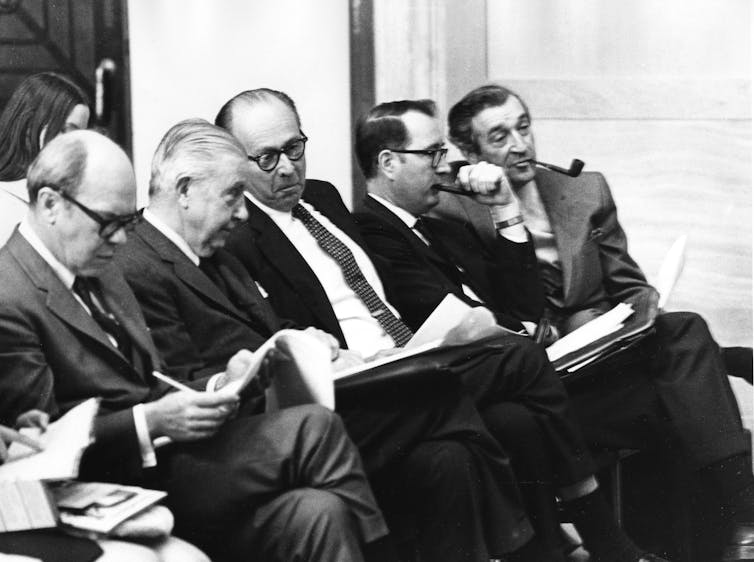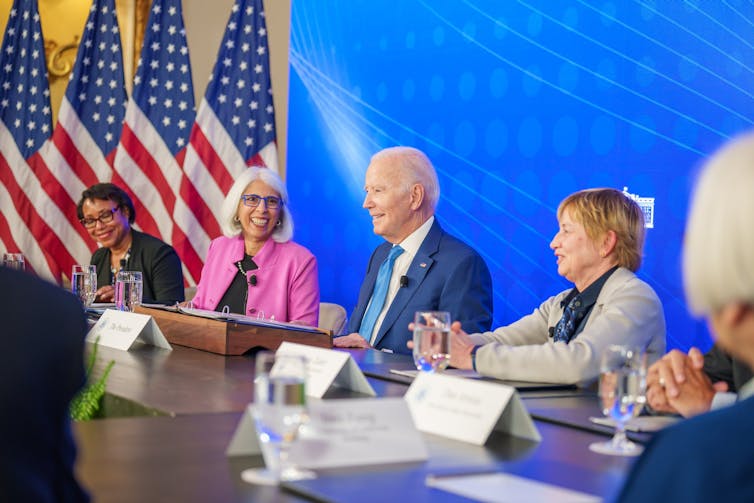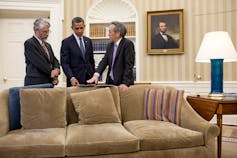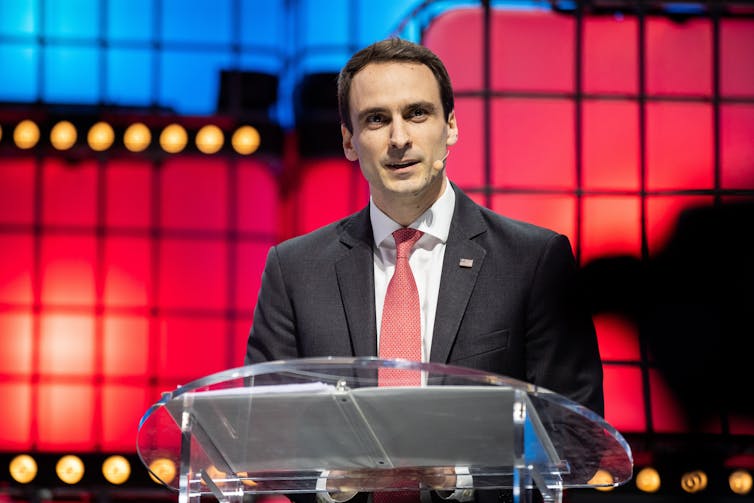The president needs scientific advice. From climate change and pandemics to artificial intelligence and the governance of the nation’s nuclear arsenal, science is at the heart of a host of foreign and domestic policy challenges facing the president.
Thankfully for the president and the country, the Office of Science and Technology Policy (OSTP) is located just across the street from the South Lawn of the White House in the Executive Office of the President. Led by the President's Science Advisor, OSTP is the one-stop shop for all things science and innovation within the White House.
The Office of Science and Technology Policy also coordinates the government's large, fragmented research and development policy system. With dozens of participating agencies, offices and departments, 10 of which have annual R&D budgets exceeding $1 billion, OSTP works to break down silos within government and oversee the health of the nation's vast R&D ecosystem.
As a research scholar on the U.S. science advisory system, I am a close observer of the OSTP and the President's science agenda. President-elect Donald Trump recently selected Michael Kratsios, the previous administration's chief technology officer, to be his next science adviser and OSTP director.
Here's a look at the history of the Office of Science and Technology Policy, where science advisers have played an important role, and how the office has been organized within the Trump White House.
The Cold War Origins of Science Advisors
Like many good stories about American science policy, the OSTP story begins with Sputnik. In 1957, the Soviet Union launched the first Sputnik and the second Sputnik, giving it a commanding lead in the space race. Just days later, President Dwight Eisenhower upgraded the World War II-era Science Advisory Board to the President's Science Advisory Board. The word change signals an increase in the role of scientists within the White House.

The President's Council of Science Advisors was extremely influential during the Eisenhower and Kennedy administrations. It helped create NASA. It led the government's response to Silent Spring, Rachel Carson's investigation into the dangers of widespread pesticide use, launching the modern environmental movement. This was also the driving force behind the dramatic growth in federal R&D spending in the 1960s.
President John F. Kennedy created the Office of Science and Technology (the predecessor to OSTP) to oversee the committee's activities and respond to growing demands from the Executive Office on how best to fund federal science programs.
The influence of the President's Council of Scientific Advisers waned in the late 1960s as its administrative responsibility for managing the growing U.S. R&D system and its role in national security diminished. White House political advisers also expressed concern that the committee was putting the interests of the scientific community ahead of those of the president. The committee is seen by some as a "science lobby" pushing for public funding to support higher education.
Tensions between science and politics erupted under President Nixon, in part because of the Vietnam War. Nixon abolished the President's Council of Science Advisors and the Office of Science and Technology in 1973 after several committee members spoke out against several of his flagship defense programs.
The move prompted Congress to take action. With the support of President Gerald Ford, the National Science and Technology Policy, Organization, and Priorities Act of 1976 established the Office of Science and Technology Policy as an independent agency within the White House and consolidated the role of the science advisor law. Nearly half a century later, the act remains the United States’ only attempt to establish a comprehensive national science policy.
This act provided the original blueprint for OSTP, much of which remains intact today. OSTP is led by a presidentially nominated, Senate-confirmed Director who serves as Science Advisor, up to four Senate-confirmed Deputy Directors, and two policy committees: the President's Council of Advisors on Science and Technology and the National Council of Science and Technology. These agencies are organized to work together: PCAST recommendations; NSTC actions.
With an annual operating budget of $8 million, OSTP is a small agency by U.S. government standards. It employs only two to three dozen full-time employees. The remaining staff are responsible for specific matters in other departments of the administrative department.

Who has the presidential ears?
Congress tasked the Office of Science and Technology Policy "to serve as the President's source of science and technology analysis and judgment" and to coordinate nearly $200 billion in annual U.S. federal research and development efforts.
The office has been criticized, particularly from the science policy community, for playing an unimportant role within the White House. It has no real budgetary authority, and the science adviser's status depends on how often the president listens to his advice.
Yet much of what science advisers do happens outside of public view. One of the most important jobs of the position is unfootprinted: the scientific advisor eliminates bad ideas. Science advisers are often the only ones in the White House who work to block science funding cuts in the president's annual budget requests to Congress.

Nonetheless, the influence of scientific advisers has been felt on many policies and is often closely aligned with government priorities. Alan Bromley, science advisor to President George H.W. Bush, developed the United States' first national technology policy, laying the foundation for the U.S. government's current approach to innovation.
John Gibbons and Neil Lane, advisers to President Bill Clinton, supported early electric vehicles and nanotechnology.
Jack Malberg, science adviser to President George W. Bush, promoted the creation of "the science of science policy" as a research discipline, resulting in new knowledge about how science works and benefits the public.

John Holdren, President Barack Obama's science adviser, has made changes to federal energy and climate policy.
Biden scientists Eric Lander, Alondra Nelson, Arati Prabhakar and Francis Collins lay out guidelines on semiconductors, public Landmark policy for federally funded research and artificial intelligence.

Science advice from the Trump White House
To date, all scientific advisors have been trained scientists. Michael Kratsios had executive experience in venture capital and political science training before serving as U.S. chief technology officer during Trump's first term.
He was an unconventional choice, but hardly controversial. Even without an advanced science, technology, engineering or mathematics degree, Kratsios' selection was publicly well-received by STEM advocacy groups, given Trump's shaky first-term record on science and his well-documented disapproval of scientific consensus. Indifference is a sign of practicality.
Titles matter, especially in Washington. If confirmed by the Senate, Kratsios would serve as OSTP director and assistant to the president for science and technology, a title that would provide direct access to the president as a senior White House aide. With Silicon Valley's outsized influence in the Trump transition, Kratsios and OSTP appear to have the power to reshape America's vision for science and innovation.
This story is part of a series of profiles on cabinet and senior executive positions.
This story has been updated to correct a typo in the OSTP budget size.